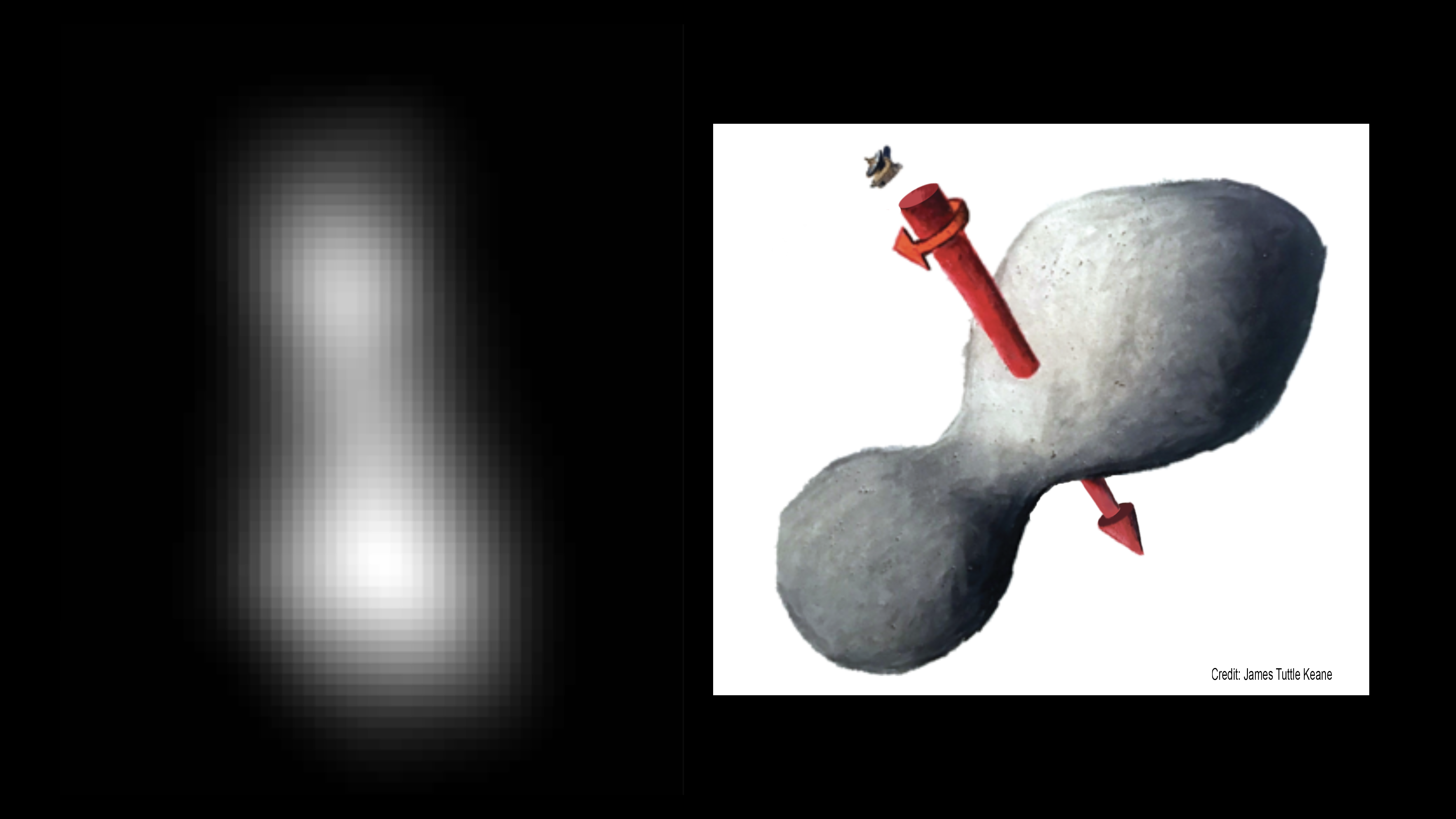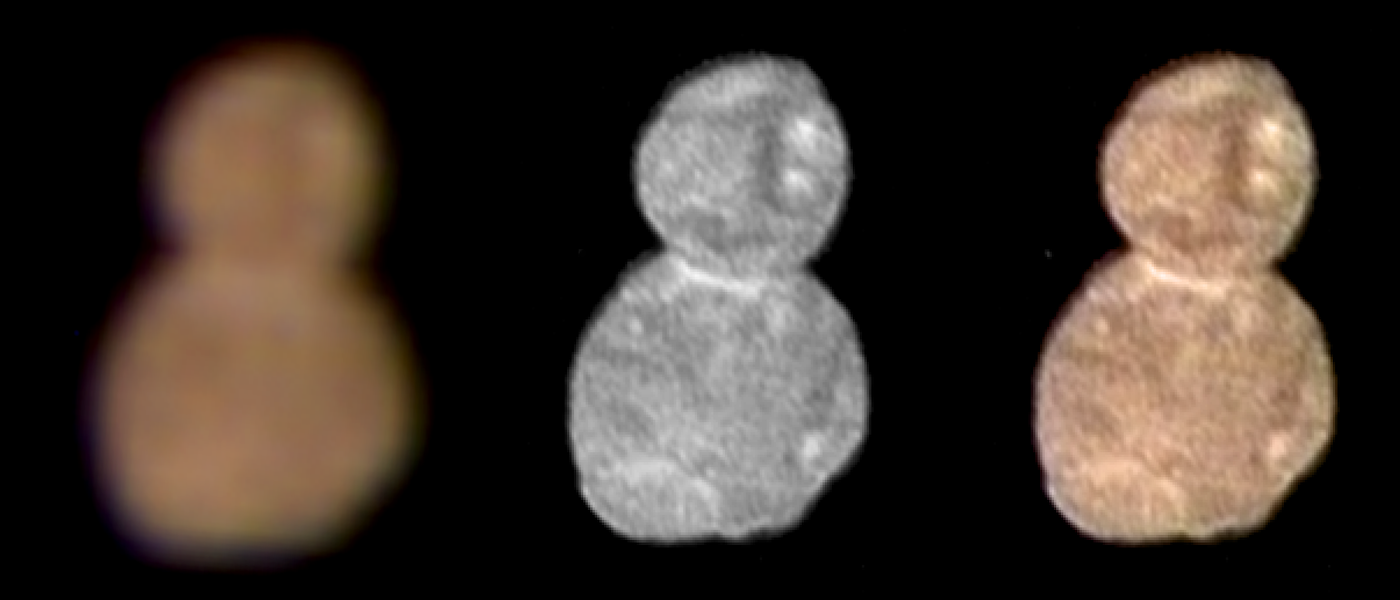Now in the planetarium: the first pictures of Ultima Thule
Congratulations, NASA! On New Year's Day – at 12:33 am on Jan. 1, 2019, to be exact – NASA's New Horizons spacecraft successfully sped past Ultima Thule at nearly 32,000 mph.
Ultima Thule, a small, cold member of the Kuiper belt – a zone of hundreds of thousands of icy worlds beyond Neptune – is the most distant and primitive world ever explored by a mission from Earth.
This week when you visit LSC's Jennifer Chalsty Planetarium, the biggest planetarium in the Western Hemisphere, you can see New Horizons' first images of Ultima Thule.
An initial blurry image, released the morning of Jan. 1, allowed scientists to conclude that Ultima Thule was most likely a single peanut-shaped object, rather than two separate objects orbiting closely around each other:

One day later, on Jan. 2, the New Horizons team released this new image – and in one moment, Ultima Thule went from being a fuzzy peanut to a vividly-realized world:

Now it’s clear that the object is composed of two joined segments, most likely joined together by a gentle collision in the distant past.
The New Horizons team refers to this collision as a "contact binary," which, as one team member described, is like a slow-motion collision of two cars in a parking lot.
On Jan. 2, the team also released the first color image of Ultima Thule. In this picture, imagery from two separate cameras on New Horizons is combined to create a color portrait with strong detail:

At 4.5 billion years old, Ultima Thule is the most ancient, primitive solar system object yet explored by a probe from Earth.
This little world, less than 20 miles across at its longest, provides a vision into the earliest days of our own solar system. It will take well over a year for all the data and images to be transmitted back to Earth and processed, but the work is starting right away. Work on the first scientific paper on the Ultima Thule encounter begins next week!
Interested in learning more? We're covering this story, and showing the photos from Ultima Thule, all week in our live planetarium show, "Wonders of the Night Sky." Click here to get showtimes and see a full list of shows playing in the Jennifer Chalsty Planetarium, the biggest planetarium in the Western Hemisphere.
